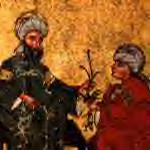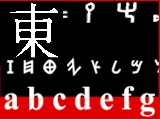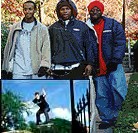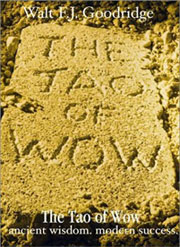








Modern Society | The Family | Group Interaction |
Art | Communication | Language |
Religion | Youth Culture | Tao of Wow
FOUNDATION NEWS
TAO OF WOW UPDATE
Assoc. Press Article
Book Summary and excerpt
Order
EVENTS
Talks/Lectures
Performances
Classes
BOOKSTORE
Suggested Reading
CONTACT
email the staff
TAO OF WOW UPDATE
Assoc. Press Article
Book Summary and excerpt
Order
EVENTS
Talks/Lectures
Performances
Classes
BOOKSTORE
Suggested Reading
CONTACT
email the staff
Group Interaction
Group InteractionSociometry: Analyzing Group Interaction
Sociometry
An analytical tool for studying group interactions.
It seeks to find out who people like or dislike and
with whom they would or would not wish to work.
This information can then be used to create a diagram
that graphically maps the preferred social interactions
obtained from interviews and questionnaires.
Analyzing Group Interaction
There are so many choices of what to observe in groups that doing process observations is easily its own full-time task. What to do with the information? First, simply notice it, and see what patterns emerge. Then, make an inference, try it out on the group with observation or intervention, and note the reaction. If the pattern is pathological, it will re-appear until it is productively addressed.
| talking patterns | who talks to whom, for how long, how often? who are high/low participators? how is silence handled? who keeps the ball rolling? |
| interruption patterns | who interrupts whom and how, with what response? |
| turn-taking | how are turns allotted, and by whom? how is speaking order negotiated? how are speaker transitions handled? how does a new speaker get to speak? |
| greeting/departure behaviors | how do people enter/leave the group? |
| leadership | who exercises influence and how, with what response? any rivalries for leadership? any autocrats? democrats? uninvolved? peacemakers? |
| decision-making | what types of decisions are made: majority or minority rule, consensus, self-authorized agendas, handclasps, plops? who decides how decisions are made? |
| sub-grouping and coalitions | any evidence of sub-grouping? is it related to topic or personalities? are there "insiders" and "outsiders" in the group? who sides with whom on what issues? |
| conflict management | avoidance? accommodation? compromise? competition? collaboration? |
| male/female dynamics | relative numbers? overt or covert sexism? dominant and submissive behavior patterns? sexual behaviors? quasi-courtship? |
| group roles | task-oriented vs. maintenance behaviors? self-oriented vs. group-oriented behaviors? |
| use of voice | voice tone, intensity, volume? |
| use of space | personal space parameters, territories, speaking distance? |
| movement and gestures | gestures, posture, other body movements? |
| touch | who touches whom, when, where, how, with what response? |
| face and eyes | eye contact, affect and emotion displays? |
| time management | how are time limits dealt with and by whom? |
| goal definition | are purposes of group articulated? by whom? |
| implicit and explicit values | how are they expressed and shared by members? |
| norms | any topic areas avoided in discussions? are both positive and negative feelings expressed? any norms about participation or kinds of questions allowed? |
| rules | under what rules does the group seem to operate? cultural? idiosyncratic? explicit? implicit? how are sanctions for rule-breaking applied? |
| themes | what words and phrases are repeated? what patterns of behavior emerge over and over again? what stories or activities are adopted by the group as "theirs?" |
| group atmosphere | is the atmosphere one of work, play, uproar, satisfaction, taking flight, sluggishness? |
| feelings | what evidence of feelings is there, such as anger, irritation, frustration, warmth, affection, excitement, boredom, defensiveness, competitiveness? any attempts to block expression of feelings? |